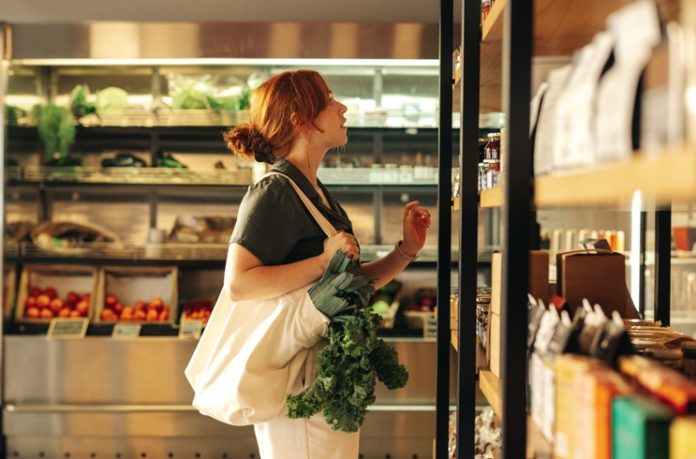Australian retail turnover grew a modest 0.1% in April 2024, according to seasonally adjusted figures released by the Australian Bureau of Statistics (ABS). This followed a 0.4% decline in March 2024 and a 0.2% growth in February 2024.
ABS Head of Retail Statistics Ben Dorber says: “Underlying retail spending continues to be weak with a small rise in turnover in April not enough to make up for a fall in March.
“Since the start of 2024, trend retail turnover has been flat as cautious consumers reduce their discretionary spending.”
Turnover in most non-food related industries rose in April. Other retailing (+1.6%) had the largest increase this month, followed by household goods retailing (+0.7%) and department stores (+0.1%).
Clothing, footwear, and personal accessory retailing (-0.7%) declined.
“The relatively earlier Easter and the different timing of school holidays across the country meant we saw some added volatility in turnover in March and April,” Mr Dorber said.
“Looking across the past two months, we see weak underlying spending in most parts of the retail industry.”
Food-related spending was mixed with a decline in food retailing (-0.5%), while there was a small increase in cafes, restaurants and takeaway food services (+0.3%).
“The fall in food retailing is a partial reversal of last month’s rise of 0.8%, where the earlier-than-usual Easter boosted spending, particularly on alcohol,” Mr Dorber said.
“Retailers told us spending on alcohol dropped off as consumers brought purchases forward into March and because they are increasingly opting for cheaper alcoholic products.”
Retail turnover growth was mixed across the country. NSW (+0.7%) saw the largest growth, followed by SA (+0.5%).
Australian retail sales remained subdued in April 2024, with a modest increase of 1.3% compared to the same month last year – and most discretionary categories remaining in decline.
The latest ABS data revealed April’s retail spending totalled $35.7 billion nationally.
Other retailing – including cosmetics, sports and recreational goods – saw the strongest growth in April (up 4.7%), followed by the staple performing categories of food (up 1.9%) and cafes, restaurants and takeaway (up 1.9%).
Household goods recorded a fifth consecutive month of sales decline (down 1.3%), whilst clothing, footwear and accessories (down 2.5%) and department stores (down 1.3%) both recorded declines for the second consecutive month.
All states and territories recorded overall growth year-on-year, led by NT (up 3.7%), Tasmania (up 2.7%), Queensland (up 2.2%), SA (up 1.7%), WA (up 1.6%), ACT (up 0.9%), with the largest markets both recording marginal growth – NSW (up 0.8%) and Victoria (up 0.6%).
Australian Retailers Association (ARA) CEO Paul Zahra says the continued decline of discretionary categories is a concerning indicator that a retail recession could be on the horizon.
“Other retailing is the only standout performer in April, and that’s typically because beauty products are the last category to be affected by economic downturns,” Mr Zahra said.
“Whilst we had an earlier Easter than usual in 2024, spending across the two months has significantly softened across discretionary spending categories, with food and takeaway bolstering overall sales figures.
“Department stores, household goods and clothing, footwear and accessories remained in decline across both March and April, which is a worrying sign for retailers,” he said.
“Household goods have suffered significantly. The category recorded once-off sales growth in November during the Black Friday sales – but has otherwise remained in decline for more than 12 months.”
“The ongoing cost-of-living pressures, interest rate ramifications and increased cost of doing business make it a very challenging period for those in the discretionary retail sector, particularly for SMBs,” Mr Zahra said.
| CATEGORY | Apr 2023 | Apr 2024 | CHANGE |
| Food | $13.971 billion | $14.245 billion | +1.9% |
| Household goods | $5.732 billion | $5.653 billion | -1.3% |
| Clothing, footwear, accessories | $3.001 billion | $2.925 billion | -2.5% |
| Department stores | $1.916 billion | $1.891 billion | -1.3% |
| Cafes, restaurants, takeaway | $5.302 billion | $5.406 billion | +1.9% |
| Other | $5.339 billion | $5.591 billion | +4.7% |
| Total | $35.264 billion | $35.713 billion | +1.3% |
| STATE | Apr 2023 | Apr 2024 | CHANGE |
| New South Wales | $11.069 billion | $11.162 billion | +0.8% |
| Victoria | $9.087 billion | $9.142 billion | +0.6% |
| Queensland | $7.182 billion | $7.341 billion | +2.2% |
| South Australia | $2.285 billion | $2.324 billion | +1.7% |
| Western Australia | $3.956 billion | $4.022 billion | +1.6% |
| Tasmania | $699 million | $718 million | +2.7% |
| Northern Territory | $318 million | $330 million | +3.7% |
| ACT | $665 million | $671 million | +0.9% |
| Total | $35.264 billion | $35.713 billion | +1.3% |





